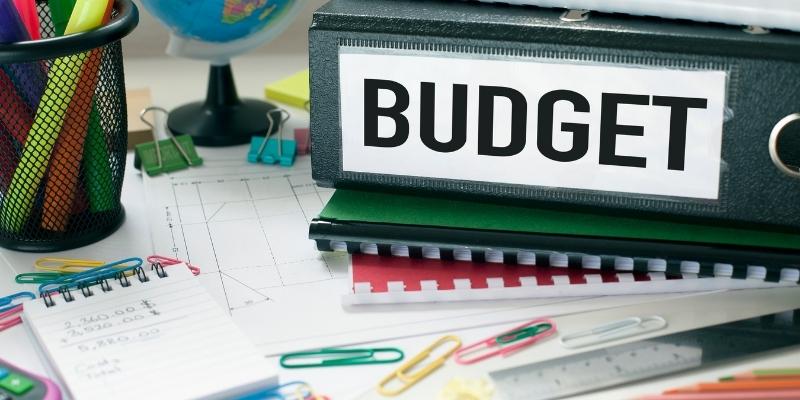
The personal financial planning process can seem daunting, but if you break it down into smaller steps it becomes much more manageable.
In this blog post, we will walk you through the entire process so that you can get started on your path to financial success! Achieving financial success is something that many people aspire to, but it’s not always easy to know where to start.
Personal financial planning process Step #1: Assess your Current Financial Situation
The first step in the personal financial planning process is to assess your current financial situation. This means taking a look at your income, expenses, assets, and liabilities.
Once you have a clear picture of where you stand financially, you can start developing goals and strategies to help you reach your targets.
Personal financial planning process Step #2: Create a Budget

The second step is to create a budget. This is where you will list your income and expenses, and track your progress over time. It’s important to be realistic when creating your budget, and make sure that it aligns with your overall goals.
A budget can help you stay on track and make informed financial decisions. Also while creating a personal budget, create a savings plan.
This involves setting aside money each month to save for your future goals. It’s important to start small and gradually increase your savings as you get closer to your targets.
A savings plan can help you stay disciplined with your finances and make progress towards long-term financial goals.
Personal financial planning process Step #3: Develop Long-Term and Short-Term Goals
Once you have a budget in place, the third step is to start developing long-term and short-term goals.
Your long-term goals may include saving for retirement or buying a home, while your short-term goals may be something as simple as putting money aside each month to cover unexpected expenses.
Your long term and short term goals should be aligned with your overall financial plan, and you should periodically revisit them to make sure they are still relevant.
Personal financial planning process Step #4: Create a Strategy to Achieve Your Goals
The fourth step is very important. Now that you have defined your goals, it’s time to create a strategy to achieve them.
This may include setting up a savings plan, investing in stocks or mutual funds, or making changes to your current spending habits. Monitor your progress and make adjustments as needed.
Personal financial planning process Step #5: Build an emergency Fund

The fifth step is critical. Emergency fund is one of the most critical aspects of personal financial planning. This is money that you set aside to cover unexpected expenses, such as medical bills or car repairs.
It’s important to have a healthy emergency fund so that you’re not forced to rely on credit cards in case of an emergency.
If you don’t build an emergency fund, you’re setting yourself up for financial disaster. You need at-least three to six months of living expenses saved.
Personal financial planning process Step #6: Save for Retirement
The sixth step is to save for retirement. One of the most important things you can do for your future is to save for retirement. This means setting aside money each month so that you can enjoy a comfortable retirement lifestyle.
There are many different ways to save for retirement, so find one that best suits your needs and start contributing as soon as possible!
Personal financial planning process Step #7: Start Saving for the Future
The seventh step is to start saving for the future. Even if your budget is tight, you can still find ways to save money by setting aside a small amount each month.
Automating your savings is the best way to make sure that you don’t forget about them, and it will help you reach your goal quicker!
There are many tools to help you automate your savings, so find one that works best for you and get started today!
Easily save and invest with Acorns, plus get a FREE bonus investment through this link!
“Join over 9.5 million people who have used Acorns to help their money grow in the background of life!”
Make managing money easy! Don’t go it alone! Truebill makes it easy for you to save more, spend less, and take charge of your financial life. Truebill is a FREE to use app.
Personal financial planning process Step #8: Invest in yourself
The eight step is to invest in yourself. This means making wise investments in assets such as property or stocks, and also investing in your education and career.
By making smart choices now, you will set yourself up for financial success down the road! Investing in yourself is one of the smartest things you can do for your future.
Most people only think about investing in property or stocks, but there are many other ways to invest in yourself. You can take classes to improve your skills, read financial books, or even start your own business!
Personal financial planning process Step #9: Protect your Assets

The ninth step is to protect your assets. This means ensuring that you have adequate insurance coverage in case of unexpected events.
It’s important to review your policies regularly and make sure that they still meet your needs. By protecting your assets, you can rest easy knowing that you are prepared for the unexpected!
Other ways you can protect your assets include using a safe deposit box and organizing your finances so that they are easy to understand.
Set up a will and power of attorney to protect your assets in the event of your death or incapacity.
Personal financial planning process Step #10: Stay Disciplined
The tenth and final step in the personal financial planning process is to stay disciplined and stay on track. This means monitoring your progress regularly, making changes as needed, and most importantly, not giving up!
Financial success doesn’t happen overnight, but if you stick to your plan and make smart decisions, you will eventually reach your goals.
Without discipline, you will find it difficult to stay on track and reach your financial goals. This is why it’s so important to have a written plan and to stick to it!
Now that you have read through the ten steps of personal financial planning, it’s time to get started! The sooner you start, the sooner you will achieve your financial goals!
Conclusion – Personal financial planning process steps
The personal financial planning process can seem intimidating, but by following these simple steps, you can make sure that your finances are in order.
Start with creating a budget and setting long-term and short-term goals.
Then develop a strategy to achieve your goals and start saving for the future. Finally, protect your assets by ensuring that you have adequate insurance coverage.
By following these steps, you can achieve long-term financial success! Take action now and get started on your personal financial plan!
Over to you
Have you planned for your financial future? I’d love to hear from you. Please share your comments below.
Found this article useful? Please don’t forget to share on social networks. Thanks!
Latest articles
- Why is Personal Finance Dependent Upon Your Behavior?
- Hosting an Online Garage Sale: Go from Clutter to Cash now
- 11+Cheap(or Free) things to do in retirement: Do more with less!
- Coast FIRE: Path to Financial Independence with Less Sacrifice
- Cash Stuffing Method: The Ultimate Financial Hack You Need to Know